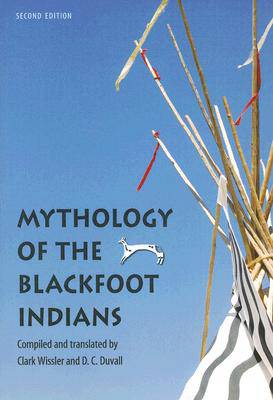
- Afhalen na 1 uur in een winkel met voorraad
- Gratis thuislevering in België vanaf € 30
- Ruim aanbod met 7 miljoen producten
- Afhalen na 1 uur in een winkel met voorraad
- Gratis thuislevering in België vanaf € 30
- Ruim aanbod met 7 miljoen producten
Zoeken
Mythology of the Blackfoot Indians
€ 27,95
+ 55 punten
Omschrijving
Mythology of the Blackfoot Indians, originally published in 1908 by the American Museum of Natural History, introduces such figures as Old Man, Scar-Face, Blood-Clot, and the Seven Brothers. Included are tales with ritualistic origins emphasizing the prototypical Beaver-Medicine and the roles played by Elk-Woman and Otter-Woman, as well as a presentation of Star Myths, which reveal the astronomical knowledge of the Blackfoot Indians. Narratives about Raven, Grasshopper, and Whirlwind-Boy account for conditions in humanity and nature. Many of the stories in the concluding group, such as "The Lost Children" and "The Ghost-Woman," were tales told to Blackfoot children. These narratives were collected early in the twentieth century from the Piegans in Montana and from the North Piegans, the Bloods, and the Northern Blackfoot in Canada. Most were translated by D. C. Duvall and revised for Mythology of the Blackfoot Indians by Clark Wissler. Darrell Kipp provides an introduction to the new Bison Books edition.
Specificaties
Betrokkenen
- Uitgeverij:
Inhoud
- Aantal bladzijden:
- 204
- Taal:
- Engels
- Reeks:
Eigenschappen
- Productcode (EAN):
- 9780803260238
- Verschijningsdatum:
- 1/01/2008
- Uitvoering:
- Paperback
- Formaat:
- Trade paperback (VS)
- Afmetingen:
- 161 mm x 228 mm
- Gewicht:
- 299 g

Alleen bij Standaard Boekhandel
+ 55 punten op je klantenkaart van Standaard Boekhandel
Beoordelingen
We publiceren alleen reviews die voldoen aan de voorwaarden voor reviews. Bekijk onze voorwaarden voor reviews.







